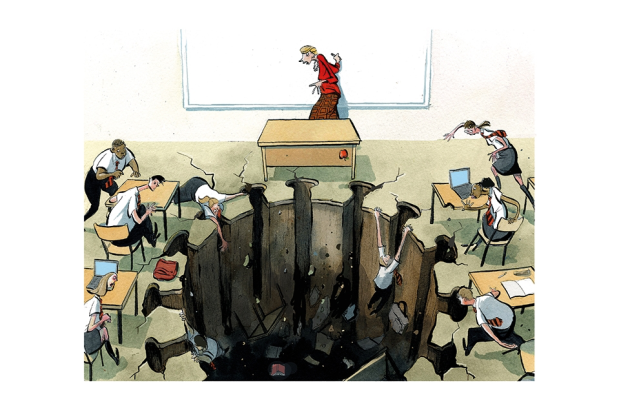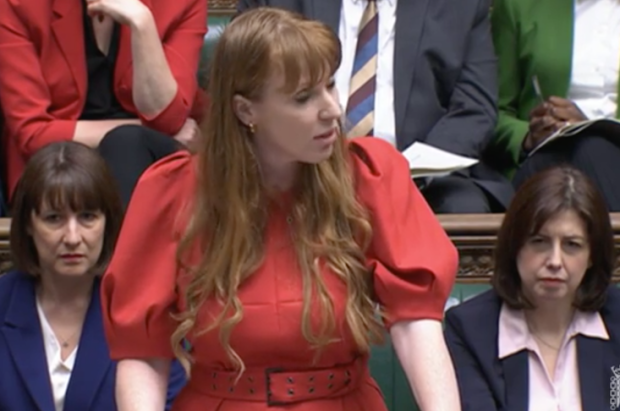For such a radical change to our monetary system, the lack of understanding of quantitative easing (QE) and its impacts is worrying. That is one of the conclusions drawn from this month’s House of Lords economic affairs committee report, ‘Quantitative easing: a dangerous addiction?’
QE involves central banks creating money and using it to buy financial assets (usually government bonds). It is known as an ‘unconventional’ monetary tool, as opposed to the conventional monetary policy of raising and lowering interest rates. But as this new report highlights, the practice has very much become a conventional part of monetary policy. The financial crisis in 2007-08 kicked off rounds of QE in advanced economies, but the Covid-19 pandemic has produced an explosion in the practice. The below graph (taken from the report) shows how the Bank of England’s balance sheet has expanded far beyond historic norms over the past 18 months.
Bank of England balance sheet as a percentage of GDP

The balance sheets of the European Central Bank (ECB) and advanced country central banks around the world have similarly expanded, and even emerging market countries have gotten in on the act. Yet as the report highlights, there are extensive QE ‘knowledge gaps’ that central bankers and policy makers should be addressing.
‘The Bank of England’s understanding of quantitative easing’s effects and its transmission mechanisms are far from complete more than a decade on from the policy’s introduction,’ says the report.
As one witness to the committee, economics professor Özlem Onaran, put it: ‘In my opinion, QE is policy without theory; it came out of an emergency.’
Among other recommendations, the committee wants the UK’s central bank to undertake more research on the effect of QE on inflation and how it helps meet the Bank’s inflation target, and it says the way QE interacts with fiscal policy (the government tax and spend part of economic policy) is still poorly understood.
‘What is clear is that quantitative easing has distributional outcomes that exacerbate wealth inequalities that can be mitigated only through fiscal policy,’ says the report.
The committee criticises the Bank of England because it has ‘not adequately engaged with debate about the trade-offs created by sustained quantitative easing.’
It goes on:
‘We heard that [the Bank] has been “defensive” about the extent to which quantitative easing has exacerbated inequalities. The Bank should publish an accessible overview of the distributional effects of quantitative easing which includes a clear outline of the range of views as well as the Bank’s view.’
This points to a challenge for central banks and policy makers in coming years: the potential for politicisation of central bank activity. The Bank of England has operational independence over monetary policy for good reason — politicians in charge of monetary policy have a tendency to over-stimulate the economy to be popular, leading to high inflation.
Arguably, central bankers should have no public view on income or wealth inequalities: better to have the blinkers on in pursuit of an inflation target and leave any side-effects for the politicians to deal with using fiscal policy, or risk losing credibility on keeping prices under control.
One witness to the committee, Otmar Issing, former chief economist at the ECB, said he already has concerns about central bank independence in terms of the implicit pressure central banks come under. ‘They are exposed to the risk of giving priority to political considerations — first, keeping long-term interest rates at a very low level for a very long time. By that they are losing control of money. The reason for this is that they have extended QE beyond the phase in which it was successful,’ he said.
Issing made the point that central banks are ‘overburdened with objectives and excessive expectations’.
‘They were seen as contributors to the great moderation with low inflation and robust growth and employment. Later, in the context of the financial crisis, they contributed to preventing the world from falling into a depression like in the 1930s. From then on they were seen as saviours of the world. I think that such elevated expectations are very dangerous, because disappointment must follow,’ he said.
The coming five to ten years will be a real test of central banks. Can they and should they justify QE in the face of wealth inequalities? Can they resist the urge to treat QE as a magic money tree to meet all manner of policy objectives politicians would like them to? And, crucially, will they be tough enough to tighten monetary policy if the current uptick in inflation turns into an inflationary trend?
The committee’s report highlights the newly emerged and emerging challenges central bankers face. It also shows we are nowhere near getting to grips with those challenges.
<//>
Got something to add? Join the discussion and comment below.
Get 10 issues for just $10
Subscribe to The Spectator Australia today for the next 10 magazine issues, plus full online access, for just $10.



















Comments
Don't miss out
Join the conversation with other Spectator Australia readers. Subscribe to leave a comment.
SUBSCRIBEAlready a subscriber? Log in